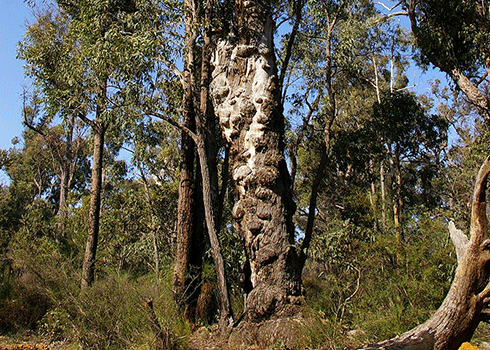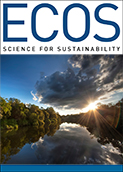
|
Published: 22 December 2014
Jarrah forests show resilience as SW WA climate dries and warms
A long-term study into jarrah forest (Eucalyptus marginata) establishment at restored mine sites has found that they are resistant to climate variability.

|
|
The jarrah forest ecoregion has experienced warmer temperatures and a 17 per cent reduction in mean annual rainfall over the 36 years from 1975 to 2011. Credit: Photograph by Gnangarra commons.wikimedia.org CC BY 2.5 AU
|
The paper, soon to be published in the Journal of Ecology, discusses the concept of forest resilience, or the ability of tree stands to recover from disturbance.
‘Data availability on forest resilience to drought is limited,’ says Assistant Professor Rachel Standish from The University of Western Australia (UWA). ‘In particular, data on seedling establishment is critical because it is the first phase of recovery.’
The researchers were able to analyse long-term records collected by Alcoa of Australia to monitor the success of jarrah forest restoration following bauxite mining.
The records covered the 19-year period 1992–2010, and included annual data on seedling establishment at restored mine sites for 587 species in 1938 plots in south-western Australia.
South-western Australia provides a unique test-bed because it is one of the few places in the world that has already experienced significant climate change.
The jarrah forest ecoregion has experienced warmer temperatures and a 17 per cent reduction in mean annual rainfall from 1975–2011 compared with the 74 years prior.
‘We found that seedling establishment occurred as much in drought years as it did in wet years,’ says Asst Prof Standish. ‘We think this is because of high reliability of rainfall despite declines in amounts of rainfall.
‘Our next step is to test some of the factors that might be important for determining whether forests recover, such as whether there is a connection to undisturbed forest and the size of the forest patch affected by drought.’
Source: UWA



